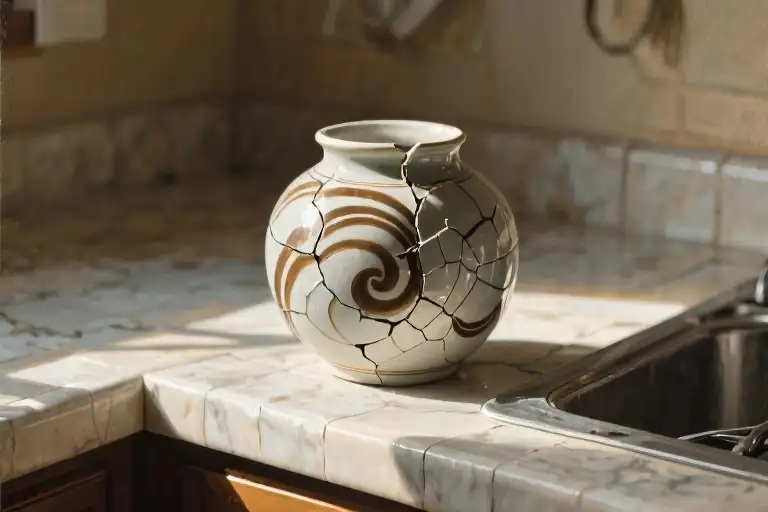I still remember the crisp dollar bill clutched in my six-year-old hand, the weight of responsibility as I walked to the corner store for bread. Then came the shadow – a tall, gangly man who snatched both my money and childhood innocence in one swift motion. That was my first encounter with what I’d later understand as a dangerous man.
Decades later, I realize how fortunate I was that day. Not because of the stolen dollar (though my mother certainly disagreed), but because financial harm would become the least destructive weapon in dangerous men’s arsenals. The real damage came disguised as love, wrapped in poetry and promises, delivered through whispers that eroded my self-worth one syllable at a time.
Manipulated? Check. Like when Jason convinced me my jealousy was unreasonable while texting his ex nightly.
Cheated on? Check, check, check. Three relationships, three discoveries of secret phones and hotel receipts.
Betrayed? Like when my nightmare about Mark sleeping with his coworker turned out to be prophetic? Check.
Emotionally assaulted? Check. The time David screamed I was “unlovable” during an argument still echoes.
Ghosted? Check. The man who vanished after my surgery left more than empty chairs in the hospital room.
Date raped? Check. That “nice guy” from the bookstore who ignored my slurred “no” after spiking my drink.
These weren’t random misfortunes, but patterns recognized too late. Like many women, I’d been conditioned to excuse “boys will be boys” behavior, to romanticize jealousy as passion, to mistake control for protection. It took years to understand what Sandra L. Brown articulates in How to Spot a Dangerous Man Before You Get Involved: these men aren’t flawed princes, but predictable threats to our emotional, physical, financial, sexual, and spiritual wellbeing.
This realization didn’t come through psychology textbooks, but through connecting dots between:
- The childhood bully who stole my lunch money
- The college boyfriend who “borrowed” my tuition funds
- The fiancé who secretly opened credit cards in my name
Financial harm was simply the most visible thread in a larger tapestry of control. The real danger lived in subtler patterns – the way dangerous men test boundaries gradually, like frogs in slowly boiling water. They start with small violations (“You’re overreacting”) that escalate to life-altering betrayals.
What makes these experiences universal isn’t their specifics, but their blueprints. Like recognizing the same ghost in different houses, survivors often describe identical manipulation tactics:
- Love-bombing: Overwhelming affection early on to accelerate intimacy
- Isolation: Slowly distancing you from friends/family under guise of “us against the world”
- Reality distortion: Making you question your memory (“I never said that”) or perceptions (“You’re too sensitive”)
These aren’t isolated red flags, but interconnected systems of control. That’s why this conversation matters – not to instill fear, but to illuminate patterns that become invisible when we’re immersed in them. Because the greatest danger isn’t the man who robs you at gunpoint, but the one who convinces you to hand over your wallet willingly.
My journey from that terrified six-year-old to someone who now recognizes danger early wasn’t about learning to spot monsters – it was understanding monsters rarely announce themselves. They come bearing gifts and apologies, their harm wrapped in plausible deniability. And that’s why we keep sharing these stories: not as warnings of who to avoid, but as reminders of who we deserve to be – women who walk through the world not in fear, but in unshakable self-possession.
What Exactly Is a Dangerous Man?
We’ve all encountered them—the charming conversationalist who later monitors your texts, the passionate lover who twists your words until you question your sanity, the reliable partner who suddenly empties your joint account. These aren’t just ‘bad boys’ or disappointing dates. As Sandra L. Brown explains in How to Spot a Dangerous Man Before You Get Involved, they’re individuals who systematically damage their partner’s emotional, physical, financial, sexual, or spiritual health.
The Five Dimensions of Harm
- Emotional Damage
The slow erosion of your self-worth through constant criticism (“No one else would tolerate your mood swings”), gaslighting (“You’re imagining things”), or emotional blackmail (“If you loved me, you’d…”). Unlike normal conflicts, these patterns leave you feeling hollow even during ‘good’ periods. - Physical Danger
Beyond visible violence, this includes coercive control over daily activities—dictating what you wear, intercepting your mail, or threatening self-harm if you leave. As one survivor shared: “He’d ‘accidentally’ spill hot coffee near me during arguments.” - Financial Sabotage
From childhood’s stolen dollar to adult experiences like coerced debt or career interference (“Quit your job—I’ll take care of you”). Financial abuse traps victims when leaving seems economically impossible. - Sexual Violation
Encompasses not just assault but reproductive coercion (stealthing, tampering with birth control) and intimacy punishments (withholding affection after disagreements). - Spiritual Erosion
The subtlest yet most profound harm—when your core beliefs about love, trust, or human decency are systematically dismantled. You stop recognizing yourself in the mirror.
The Charming Facade
What makes these men particularly dangerous is their ability to mimic healthy partners initially. The same man who brings soup when you’re sick might later use your illness as ammunition (“You’re always too tired for me”). Brown notes: “The most toxic relationships often start with intensity that feels like destiny.”
Why Labels Matter
Calling someone ‘difficult’ or ‘complicated’ minimizes the harm. Precise language like emotional manipulator or financial abuser:
- Validates your experience
- Helps identify repeating patterns
- Guides appropriate responses (therapy vs. legal intervention)
“Naming the behavior is the first step to disarming its power,” emphasizes Brown. This clarity separates isolated incidents from dangerous behavioral systems.
Your Reality Check
If you frequently:
- Justify behaviors to friends
- Feel chronically off-balance
- Make excuses for their cruelty
…you might be encountering more than just a flawed human. As we’ll explore next, these men operate from identifiable playbooks—once you learn the signs, their tactics lose potency.
7 Behavioral Patterns of Dangerous Men
Understanding the tactics used by dangerous men is crucial for self-protection. These behaviors often follow predictable patterns, though they may manifest differently in each relationship. Let’s break down the seven most common types of harm, illustrated with real experiences to help you recognize them.
1. Manipulation: The Slow Erosion of Self
Gaslighting became my normal when Mark would insist, “You’re too sensitive” every time I expressed hurt. He’d rearrange facts until I doubted my own memory. The psychological manipulation was subtle – compliments would alternate with backhanded remarks about my weight, creating constant emotional whiplash.
Key signs:
- Denying things they clearly said/did
- Twisting conversations to make you apologize
- Gradual isolation from friends/family
2. Deception: The Web of Lies
Jason maintained three simultaneous relationships for eight months. His lies had layers – fake business trips, a “cousin” who was actually his wife. What stung most wasn’t the infidelity, but how casually he fabricated stories, even about trivial things like his coffee order.
Pattern recognition:
- Inconsistent stories about their past
- Overly defensive about phone privacy
- Strange gaps in their schedule
3. Betrayal: When Dreams Warn You
That visceral dream about Tom sleeping with his intern wasn’t paranoia – it was my subconscious connecting dots I’d ignored. The emotional betrayal cut deeper than the physical act. He’d been grooming this situation for months, exploiting her admiration and my trust.
Pre-betrayal red flags:
- New “work wife” friendships
- Unexplained charges on shared accounts
- Sudden criticism of your appearance
4. Emotional Abuse: Words as Weapons
During our worst fight, David screamed that nobody would ever love my “brokenness.” The verbal abuse followed a cycle: rage → cruel insults → lavish apologies → temporary peace. Like many emotional abusers, he targeted my deepest insecurities about past trauma.
Toxic language markers:
- “You’re lucky I put up with you”
- Mocking your interests/intelligence
- Threats disguised as jokes
5. Ghosting: The Ultimate Cowardice
Post-surgery, when I needed help changing bandages, Ryan vanished. No explanation, just radio silence after two years together. This form of emotional abandonment leaves unique scars – the lack of closure makes healing harder.
Pre-ghosting signals:
- Taking longer to respond to texts
- Canceling plans last-minute
- Avoiding future-talk
6. Sexual Coercion: Violation Disguised as Affection
My “date rape” happened with someone I’d dated for months. That’s the danger – we assume predators are strangers, but most know their victims. He ignored my clear “no,” then claimed I “led him on.”
Consent violations:
- Guilt-tripping (“If you loved me…”)
- Pressuring when you’re intoxicated
- Punishing refusal with sulking
7. Financial Control: From Stolen Dollars to Stolen Independence
That childhood dollar theft mirrored adult experiences. Paul gradually took over my finances – first “helping” with budgeting, then demanding receipts for groceries. Economic abuse creates dependency that traps victims.
Financial red flags:
- Discouraging your career growth
- Secretive about their finances
- Making you feel guilty for spending
Protective Tip: Start documenting suspicious incidents (screenshots, journal entries) even if you’re not ready to leave. This creates a timeline that can reveal patterns.
These behaviors rarely appear overnight. Dangerous men test boundaries gradually, like a frog in slowly boiling water. Trust that nagging feeling when something feels “off” – your instincts are picking up on micro-signals before your conscious mind can articulate them.
Why We Fall Into the Trap: The Psychology Behind Attracting Dangerous Men
It’s a question that haunted me for years after my third toxic relationship: Why do I keep choosing men who hurt me? The answer lies in patterns deeper than we realize—patterns woven into our psyche long before we ever swipe right or say “I do.”
The Childhood Blueprint
Psychology reveals we’re drawn to what feels familiar, not what’s healthy. If your father was emotionally distant, you might confuse anxiety (“Will he text back?”) with passion. If your mother tolerated abuse, you could mistake control for care.
Key indicators you’re replaying childhood wounds:
- You feel intensely “alive” in chaotic relationships but bored in stable ones
- His intermittent affection (the infamous “breadcrumbing”) feels more valuable than consistent love
- You assume responsibility for his behavior (“If I were prettier/smarter/quieter…”)
Case Study: Sarah, 29, shared: “All three men I loved mirrored my alcoholic dad—charming at first, then cruel. Only in therapy did I see I was trying to rewrite history by ‘fixing’ them.”
The Narcissist’s Allure
Dangerous men often exhibit narcissistic traits that create addictive relationships:
- Love-Bombing: Overwhelming attention early on (gifts, future-faking)
- Triangulation: Mentioning exes or flirts to induce jealousy
- Gaslighting: Making you doubt your reality (“You’re too sensitive”)
Why it works: The rollercoaster of idealization and devaluation triggers dopamine spikes—akin to gambling addiction. Research shows trauma bonds form faster than healthy attachments.
Breaking the Cycle
Recognize the pattern
- Journal recurring themes in past relationships
- Note physical reactions: Anxiety around him often signals danger, not “butterflies”
Reframe your narrative
Instead of “I attract toxic men,” try “I’m learning to reject toxicity.” Your picker isn’t broken—it’s being recalibrated.
Practical reset
- Take a 3-month dating hiatus to disrupt old habits
- Create a “green flags” list (e.g., “Apologizes sincerely”)
“Healing isn’t about never falling for the wrong person again. It’s about recognizing the wrong person faster and leaving sooner.”
If you’ve endured multiple toxic relationships, know this: Your capacity for love isn’t the problem. Your resilience is proof you have exactly the emotional intelligence needed to build healthier bonds. The work now is directing that love inward—until the safe man feels like home, not “too boring.”
Recognizing and Leaving Dangerous Relationships
Escaping a toxic relationship requires both awareness and a concrete action plan. Many women stay in harmful situations not because they’re weak, but because they lack the tools to recognize red flags early or execute safe exit strategies. Having navigated this journey myself, I want to share practical steps that helped me break free.
3 Critical Moments to Spot Red Flags
- The Courting Phase (0-3 months)
Dangerous men often reveal themselves through subtle inconsistencies:
- Love bombing: Excessive flattery/gifts before establishing emotional connection (“He bought me designer shoes on our second date but mocked my career goals”)
- Boundary testing: Small violations disguised as jokes (“You’re too sensitive” when you express discomfort)
- Selective honesty: Sharing traumatic pasts to elicit sympathy while hiding current behaviors
- The Honeymoon Period (3-6 months)
When the mask starts slipping:
- Triangulation: Mentioning exes/female friends to provoke jealousy (“My assistant totally gets me—unlike you”)
- Gaslighting 101: Denying facts you clearly remember (“I never said I was divorced—you misunderstood”)
- Financial control: Suggesting you “take it easy” at work while monitoring your spending
- Conflict Escalation (6+ months)
The true colors emerge:
- Punishment cycles: Silent treatment for minor disagreements lasting days
- Victim reversal: Making you apologize for their outbursts (“Look what you made me do”)
- Isolation tactics: Discouraging time with friends/family under guise of “protecting” you
The 5-Step Safety Exit Plan
- Document Everything
- Save threatening texts/emails in password-protected cloud folders
- Photograph property damage or injuries with timestamps
- Keep a hidden journal recording incidents (include dates/locations/witnesses)
- Build Your Support Network
- Confide in 3 trusted people who’ll check on you weekly
- Identify “safe spaces” (friend’s apartment, women’s shelter) in advance
- Memorize emergency contacts like the National Domestic Violence Hotline (800-799-7233)
- Financial Independence Prep
- Open a separate bank account if sharing finances
- Stash emergency cash ($500+) and essential documents (passport, birth certificate)
- Consult legal aid about restraining orders or tenant rights if cohabitating
- The Actual Breakup
- Never do it alone: Have friends nearby or meet in public
- Keep it brief: Avoid debates—say “This isn’t working” not “You’re abusive”
- Expect manipulation: Tears, promises to change, or sudden anger are common
- Post-Breakup Protection
- Change all passwords (email, social media, banking)
- Vary your routines and temporarily disable location sharing
- Notify workplace security if there’s stalking risk
Healing Resources That Worked for Me
Books for Clarity:
- The Gift of Fear by Gavin de Becker (identifying predatory behavior)
- Psychopath Free by Jackson MacKenzie (recovering from emotional abuse)
Therapeutic Support:
- RAINN.org: 24/7 sexual assault hotline with chat options
- BetterHelp: Affordable online therapy specializing in trauma
- Local support groups: Search “DV survivor meetings + [your area]”
Practical Tools:
- MySafePlan app: Creates personalized safety strategies
- Noonlight bracelet: Emergency alert system disguised as jewelry
What nobody tells you? The hardest part isn’t leaving—it’s staying gone when loneliness hits. That’s when I’d reread my own journal entries or call my designated “reality check” friend. Healing isn’t linear, but with these tools, you’re building an exit ramp from that toxic cycle—one solid step at a time.
Reclaiming Your Power: From Survival to Thriving
Three years ago, I finally understood what healthy love feels like. It arrived quietly – no grand gestures, no dizzying intensity, just steady warmth like morning sunlight through my kitchen window. My partner respects when I say “I need space,” celebrates my successes without jealousy, and has never once called me names during disagreements. This ordinary, beautiful safety is what every woman deserves.
Your healing journey matters – whether you’re still untangling yourself from a toxic relationship or rebuilding confidence afterward. Here’s what helped me transition from victim to survivor to thriver:
1. Boundary Building 101
- Start small: Practice saying no to minor requests (“No, I can’t take that extra shift”) before tackling bigger ones
- The 24-hour rule: When someone crosses a line, wait a day before responding. Trauma responses often make us over-explain
- Physical reminders: Wear a bracelet as a tactile cue to check in with your boundaries
2. Rewriting Your Red Flag Detector
“Why didn’t I see the signs earlier?” haunted me until I created this reframing exercise:
| What I Believed Then | What I Know Now |
|---|---|
| “Jealousy means he cares” | “Possessiveness isn’t love – it’s control” |
| “He’s just stressed” | “Consistent cruelty isn’t circumstantial” |
| “I can fix him” | “Broken people must choose their own healing” |
3. Creating Your Support Ecosystem
- Professional help: Look for therapists specializing in trauma recovery (Psychology Today’s directory helped me)
- Peer networks: Join closed Facebook groups like “Survivors of Narcissistic Abuse”
- Creative outlets: I processed grief through journaling – one page per toxic relationship, then ritualistically burned them
Your story deserves witness – not as a cautionary tale, but as testament to your resilience. When you’re ready, consider sharing your experience through:
- Anonymous submissions to platforms like @TheUnsentProject
- Local women’s shelter advocacy programs
- Art forms that transform pain into purpose
That trembling voice inside whispering “Maybe it wasn’t that bad”? Here’s your permission slip: Your pain was valid. Your healing is sacred. And your future relationships can be peaceful harbors, not emotional war zones.
Love shouldn’t leave fingerprints on your soul. It should feel like coming home – to yourself.





